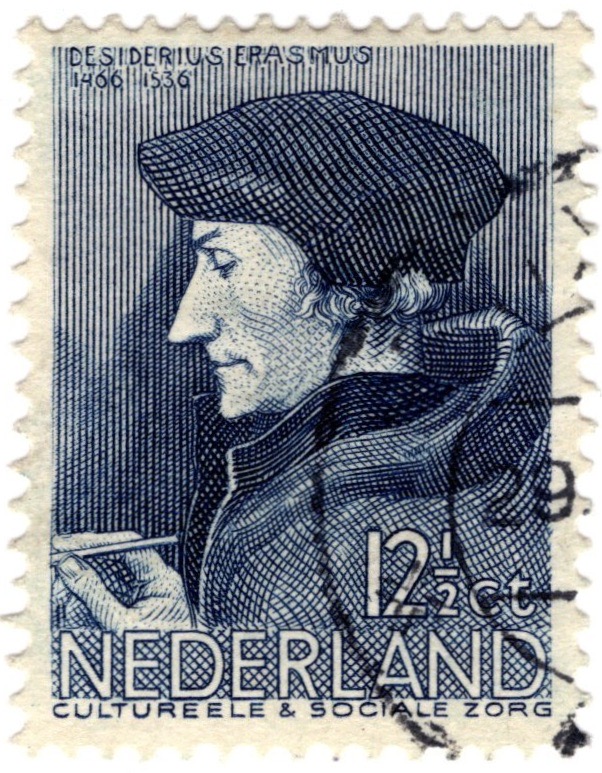The Netherlands stamp issued on 30 September 1969 commemorates the 500th birth anniversary of Desiderius Erasmus. His name will be known to many, mainly in the field if education – many schools, facilities and universities employ the name and in Europe, the Erasmus Programme enables students to spend up to a year of their university courses at a university in another country. So, who was Erasmus and why does he feature on a stamp issue of the Netherlands?
As it happens, this was not the first time that Desiderius Erasmus had appeared on a Dutch stamp. His portrait appeared on an earlier 1936 stamp, one of four in an issue raising funds for cultural and social relief. Erasmus is featured on the highest 12½ (+3½c) denominated stamp on the 400th Anniversary of his death on 12th July 1536.

Desiderius Erasmus in believed to have been born in the Dutch city of Rotterdam in 1466. Although closely associated with Rotterdam, he spent only four years there and received a worthy education at a number of monastic or semi-monastic schools. He was ordained a Catholic priest in 1492 and studied at the University of Paris. He went on to become a celebrated philosopher and theologian and one of the greatest scholars of the Renaissance. Most notably, he translated new Latin and Greek editions of the New Testament that would influence the Protestant Reformation and Catholic Counter-Reformation.
Unlike the earlier stamp issue, the featured 25c denominated stamp was released as a single stamp on phosphorescent paper and quite striking maroon on yellow green. Erasmus was painted at least three times in 1523 by the artist, Hans Holbein. The portrait used in the 1936 stamp issue is based on the painting by Holbein that now hangs in the Louvre, Paris, and the later 1969 stamp based on the Holbein painting that hangs in the National Gallery, London. Despite more than 30 years separating the two issues, both were designed by Shem Hartz.

Although widely celebrated in academic circles, it worth noting that Erasmus was capable of getting it wrong. The Greek proverb ‘ten skaphen skaphen legein’ can be translated to English as ‘to call a bowl a bowl’. Erasmus mistook the Greek skaphē (bowl) for a derivative of skaptein (to dig), hence deriving the phrase ‘to call a spade a spade’. It is perhaps a testament to the influence of the man that the inaccurate translation stuck!
To view postal issues of Netherlands, please visit the M&S Philately HipStamp store.

